|
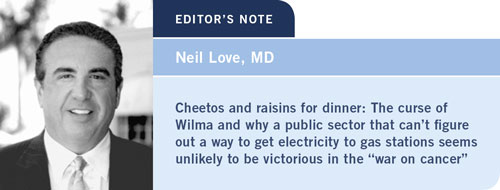
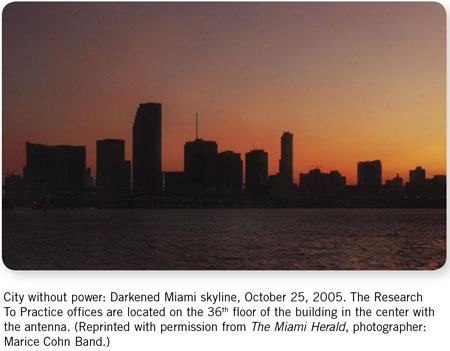
Tuesday, October 25, 2005, 9:23 PM
At this moment — 36 hours after the storm — there is essentially no
electricity available for the four million residents of Dade, Broward and Palm
Beach Counties. None, nada, bupkis. It’s as dark as a planetarium around
here, and in fact, tonight many less fortunate South Floridians are seeing the
stars through open roofs, praying there will be no rain. I have 54 minutes of
battery time left on my laptop. With not much else to do, I begin to reflect
on how the glacier-like response of most governmental agencies to Hurricane
Wilma’s recent visit to South Florida mimics what we’ve seen for decades in
oncology research and practice, where important clinical trials take years to be
approved and more years to execute.
Sitting on my breezy porch a while ago, listening with a remaining powered
iPod to Harold Burstein’s interview for this issue of Breast Cancer Update, I
wondered how many cancer patients will suffer relapses and death as the US
cooperative clinical trials process and mechanisms — which were verbally crucified in a recent interview for our series by NSABP director Norman
Wolmark — attempts to construct a new generation of adjuvant clinical trials
incorporating the recent exciting breast cancer clinical trial findings with
trastuzumab, bevacizumab, the aromatase inhibitors and various permutations
of taxane-based therapy.
From Harold’s profoundly knowledgeable perspective, it would be ideal if we
could launch a new generation of adequately powered adjuvant breast cancer
trials that would be individually designed for patients with HER2-positive,
ER-positive and triple negative tumors and test a variety of strategies for each.
Listening jealously to the monotonous drone of my neighbor’s generator, I
wonder if the same government that can’t efficiently help people in a storm
can set in place an infrastructure to follow Harold’s very astute suggestions.
10:10 PM
My brave Mac is running on fumes, and it will soon be time to go back to
staring at candles. Not having television, it’s difficult to know what people
think about this Wilma mess, but my guess is that we are not Geraldo-worthy
and that the airwaves will be monopolized by media yes-men and women,
profusely commending all the fine work being done under such trying conditions.
The refrigerator is full of decaying food that my wife Adriana and I
begin to toss out, but those Cheetos and raisins look safe and mighty tempting
for a romantic, late-night candlelit dinner.
Thursday, October 27, 2005
It is now three full days after the storm and things actually seem worse than
when it simply wasn’t advisable to leave the “comfort” of your home. Apparently
in all the post-Katrina teeth gnashing about being better prepared for
a hurricane, no one figured out that electricity is required to pump gasoline,
and since almost no South Florida gas stations have generators, the city is
frozen; people are suffering, and businesses are hemorrhaging because no one
can get to work or anywhere else.
Endless lines at the few open gas stations make us all feel like fools as we burn
more fuel waiting with our engines idling than we are allowed to pump. With
essentially no operational traffic signals, and trees all over the roads, those
with gas venture out with extreme caution.
South Florida resident pundit Dave Barry — writing in The Miami Herald
— likens our current situation to one of Mel Gibson’s postapocalyptic Road
Warrior movies, but notes that, “Mel did not have to deal with South Florida
drivers, who simply do NOT grasp the concept of the four-way stop. Down
here, when you come to an intersection with a nonworking stoplight, you
have NO idea what any of the other drivers are going to do. Some slow down;
some speed up; some make emergency U-turns to get behind you, in case you
are forming a gas line. Mel wouldn’t last 10 minutes out there.”
To our amazement, the Research To Practice offices have power, and using
the precious liquid gold in my shrinking tank to drive to work, I hear a cheery news anchor “ journalist” on the radio interviewing an equally imbecilic
spokesperson for Florida Power and Light, who breathlessly announces that
the number of homes in Broward County without electricity has dropped
below the magic 700,000 level (695,000), while in Miami-Dade only 600,000
customers are in the dark. The deep-voiced Ted Baxter sound-alike on the
radio announces with great encouragement that the President is doing his
traditional Air Force One hurricane f ly-over today. No doubt a series of
empathetic photo-ops will be seen by the rest of the country, where the
televisions work.
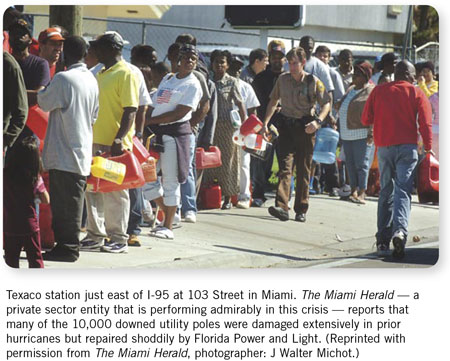
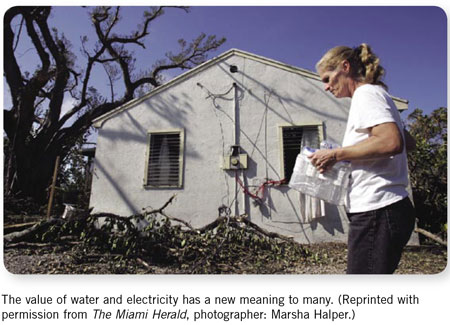
I don’t want to pick on W or his brother in Tallahassee any more than I
would single out specific people at the NCI or Medicare or the FDA for
their antiquated policies and procedures. In my mind, that sluggishness is the
nature of bureaucracy and bean counting and why I run my own company
rather than continuing on the faculty of the University of Miami, which like
other academic centers, prides itself on obtaining good deli platters for their
endless meetings.
You can bet that Wal-Mart, Home Depot and Publix will be more efficient
dealing with this Wilma mess than FEMA or George or Jeb B, just as
corporate America took the lead after Katrina. The spirit of the private sector
is also the reason that our CME group has not let the storm stop us. Right
now, half of our staff is cooped up in a downtown hotel across the street from
our offices because they can’t obtain gas to drive in and have no electricity to
work at home. Our dazed group started straggling in the day after the storm
and has been cranking out content furiously all week, dedicated to their tasks
because they believe that our products and services provide an important value
to people whose physical and mental suffering makes the impact of hurricanes
seem minimal — cancer patients and their families, who partner every day
with their healthcare teams to combat what is often a relentless disease.
Maybe someday an innovative, functional oncologic private-sector entity
(Wol-Mark?) will take control of clinical cancer research and practice and find
answers quicker than our lights are expected to come back on.
Geraldo, where are you when we need you?
— Neil Love, MD
NLove@ResearchToPractice.net
December 5, 2005
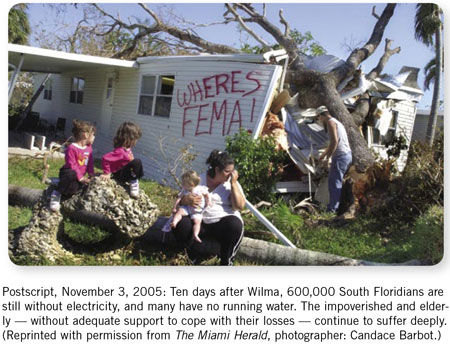
|

